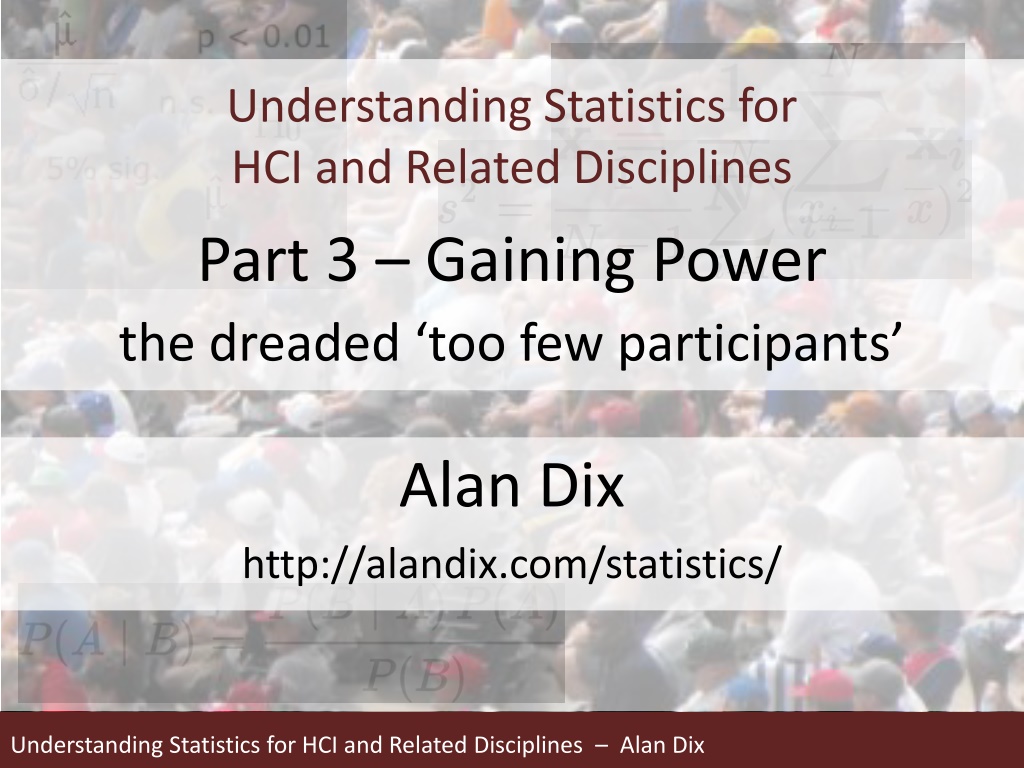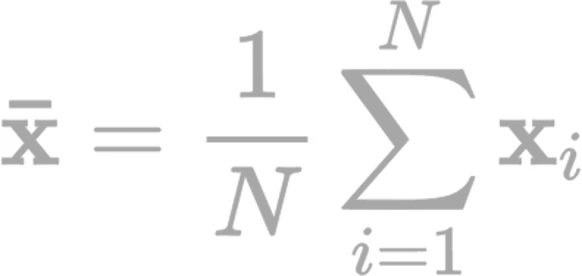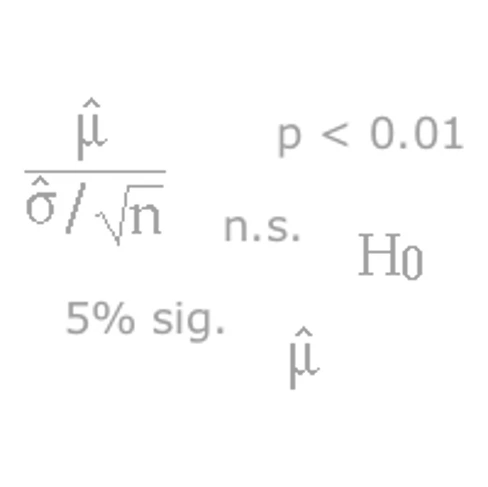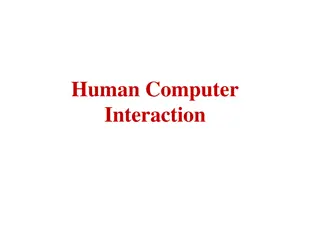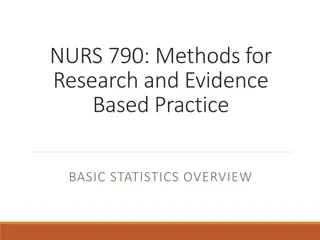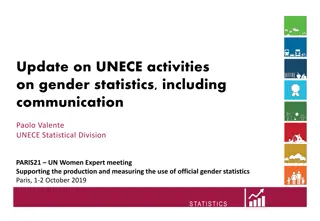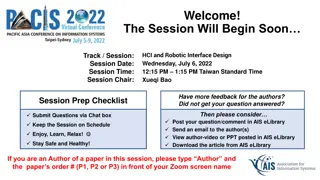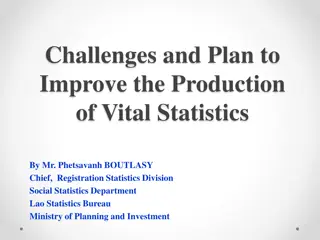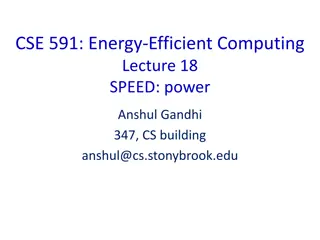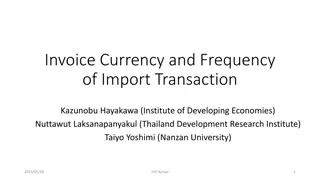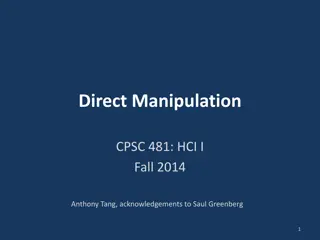Gaining Power in Statistics for HCI
In this insightful read, Alan Dix dives into the crucial aspect of gaining statistical power in the field of Human-Computer Interaction (HCI). Explore ways to enhance research outcomes by understanding statistical power, avoiding false negatives, and the impact of participant numbers. Discover strategies to increase power without compromising generality and learn about the significance of effect size in detecting differences. Navigate through statistical nuances to optimize research effectiveness.
Download Presentation

Please find below an Image/Link to download the presentation.
The content on the website is provided AS IS for your information and personal use only. It may not be sold, licensed, or shared on other websites without obtaining consent from the author. Download presentation by click this link. If you encounter any issues during the download, it is possible that the publisher has removed the file from their server.
E N D
Presentation Transcript
Understanding Statistics for HCI and Related Disciplines Part 3 Gaining Power the dreaded too few participants Alan Dix http://alandix.com/statistics/ Understanding Statistics for HCI and Related Disciplines Alan Dix
dont you hate it when Understanding Statistics for HCI and Related Disciplines Alan Dix
statistical power what is it? if there is a real effect how likely are you to be able to detect it? avoiding false negatives Understanding Statistics for HCI and Related Disciplines Alan Dix
increasing power standard approach add more participants but not the only way! can get more power but often sacrifice a little generality need to understand and explain with great power comes great responsibility ;-) Understanding Statistics for HCI and Related Disciplines Alan Dix
Understanding Statistics for HCI and Related Disciplines Alan Dix
noiseeffectnumber triangle three routes to gain power Understanding Statistics for HCI and Related Disciplines Alan Dix
recall Stats 101 (for simple data) standard deviation of data often noise things you can t control or measure e.g. individual variability s.e. standard error of mean (s.e.) the accuracy of your estimate (error bars) s.e. = / n (if is an estimate n-1 ) to half standard error you must quadruple number. Understanding Statistics for HCI and Related Disciplines Alan Dix
effect size how big a difference do you want to detect? call it the accuracy (s.e.) needs to be better than >> / n Understanding Statistics for HCI and Related Disciplines Alan Dix
number of participants >> / n effect size noise Understanding Statistics for HCI and Related Disciplines Alan Dix
noiseeffectnumber triangle to gain power address any of these not just more subjects! Understanding Statistics for HCI and Related Disciplines Alan Dix
general strategies increase number the standard approach but square root often means very large increases reduce noise control conditions (physics approach) measure other factors and fit (e.g. age, experience) increase effect size manipulate sensitivity (e.g. photo back of crowd!) Understanding Statistics for HCI and Related Disciplines Alan Dix
Understanding Statistics for HCI and Related Disciplines Alan Dix
subjects control or manipulate who Understanding Statistics for HCI and Related Disciplines Alan Dix
more subjects or trials more subjects average out between subject differences more trials average out within subject variation e.g. Fitts Law experiments but both both may need lots e.g. to reduce noise by 10, need 100 times more Understanding Statistics for HCI and Related Disciplines Alan Dix
within subject/group cancels out between subject variation helpful if effect reasonably consistent but between subject variability high may cause problems with order effects, learning condition A condition B Subjcet # 1 2 3 4 5 6 7 8 9 10 Understanding Statistics for HCI and Related Disciplines Alan Dix
narrow/matched users aims to reduce between subject variation choose subjects who are very similar to each other or in some way have matched e.g. balance gender, skills allows between subject experiments how do you know what is important to match? Understanding Statistics for HCI and Related Disciplines Alan Dix
targeted user group aims to increase the effect size choose group of users who are likely to be especially affected by the intervention e.g. novices or older users but generalisation to other users will be by theoretical argument not empirical data Understanding Statistics for HCI and Related Disciplines Alan Dix
Understanding Statistics for HCI and Related Disciplines Alan Dix
tasks control or manipulate what Understanding Statistics for HCI and Related Disciplines Alan Dix
distractor tasks aim to saturate user s cognitive resources so make them more sensitive to intervention e.g. count backwards while performing task helpful when coping mechanisms mask effects overload leads to errors mental load add distractor capacity condition A B condition A B Understanding Statistics for HCI and Related Disciplines Alan Dix
targeted tasks design a task that will expose effect of intervention e.g. trouble with buttons paper (expert slip) but care again with generalisation! Understanding Statistics for HCI and Related Disciplines Alan Dix
example: trouble with buttons error-free behaviour release mouse over button press mouse over button expert slip move off button first and then release Understanding Statistics for HCI and Related Disciplines Alan Dix
trouble with buttons (2) novices: work more slowly less likely to make slip notice lack of semantic feedback so they recover experts: act quickly so make more slips focused on next action, so miss feedback problem: experts slips don t happen often never in experiments needed to craft task to engineer expert slips Understanding Statistics for HCI and Related Disciplines Alan Dix
demonic interventions! extreme version create deliberately nasty task! e.g. 'natural inverse' steering task Fitts Law-ish experiment added artificial errors to cause overshoots but again generalisation and subjects may hate you! Understanding Statistics for HCI and Related Disciplines Alan Dix
reduced vs. wild in the wild has lots of extraneous effects = noise! control environment => lab or semi-wild reduced task e.g. scripted use in wild environment reduced system e.g. mobile tourist app with less options Understanding Statistics for HCI and Related Disciplines Alan Dix
Understanding Statistics for HCI and Related Disciplines Alan Dix
